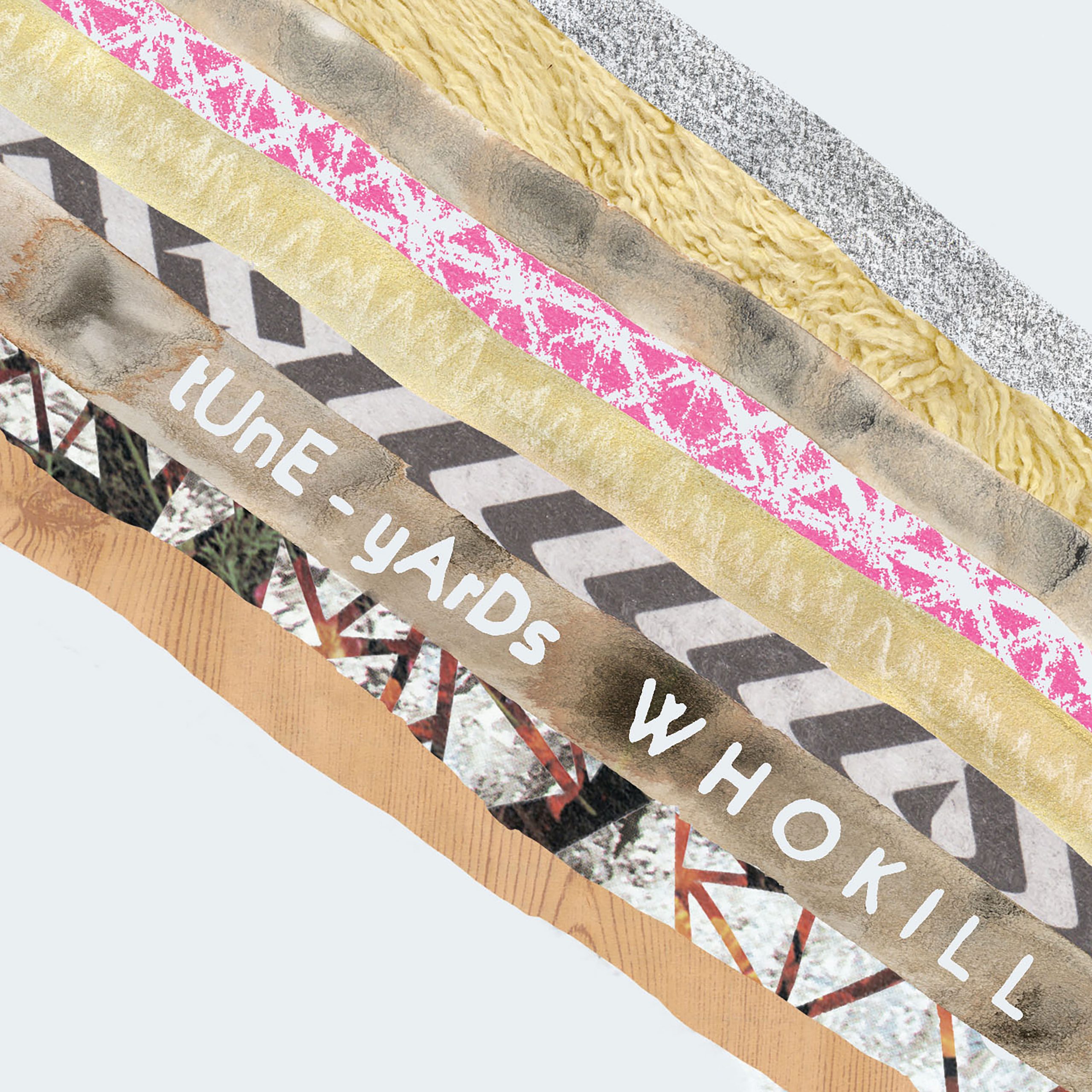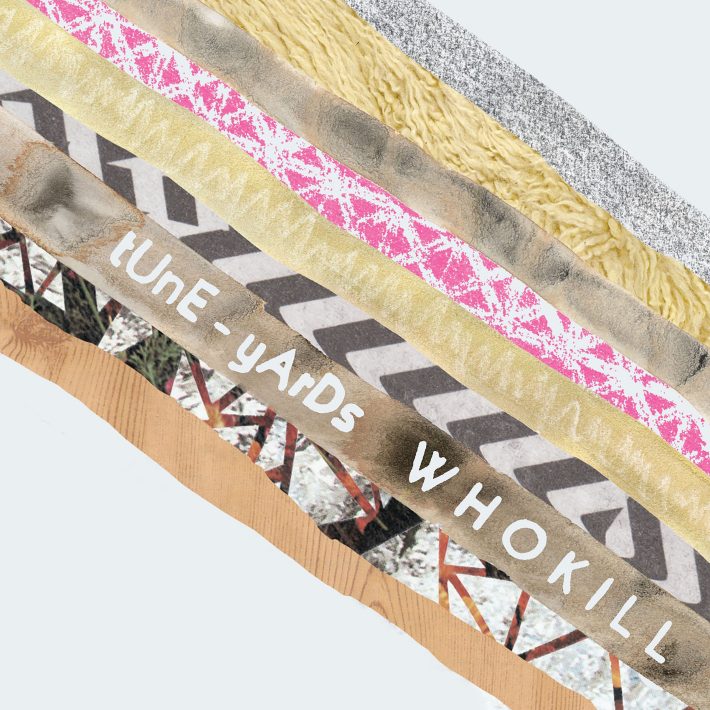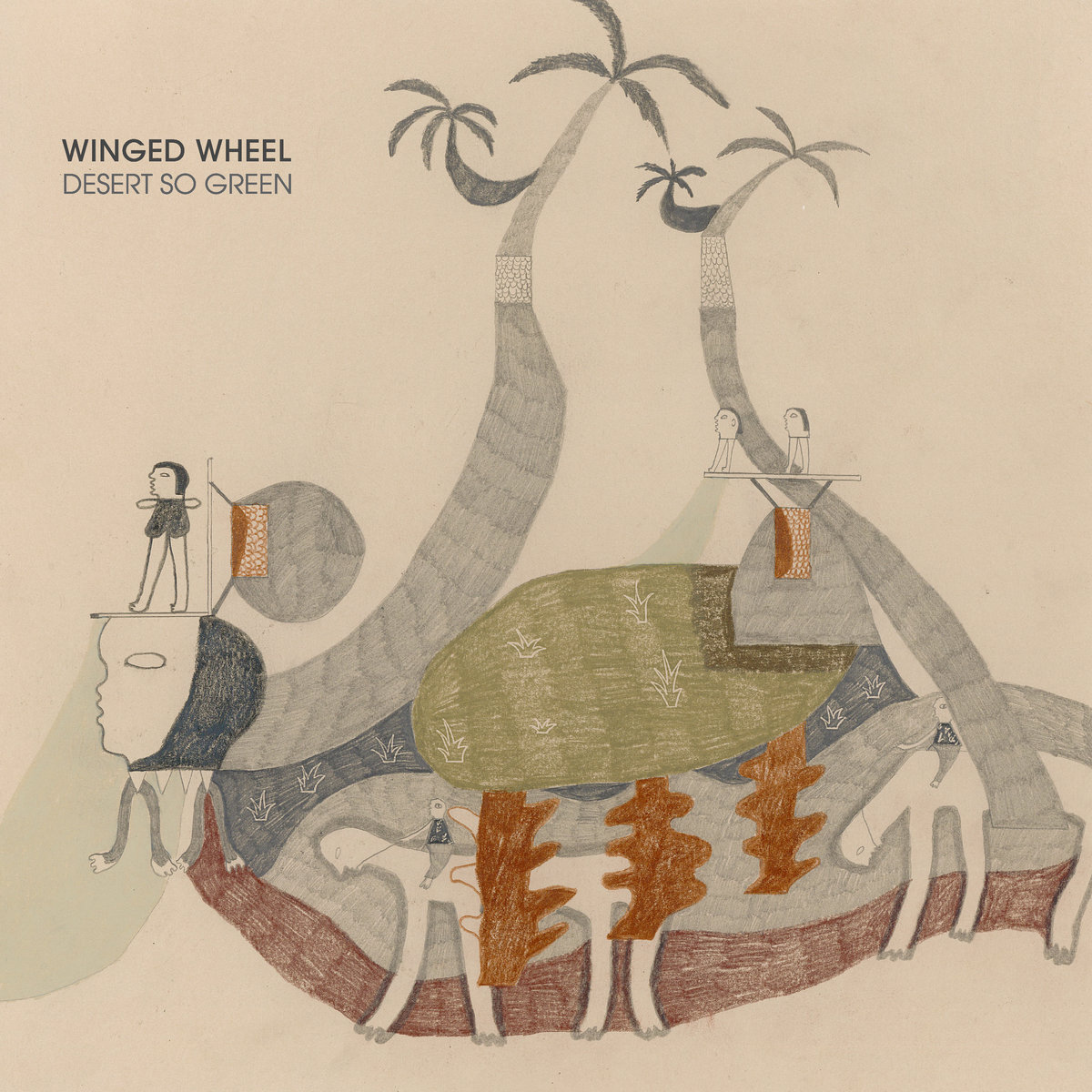- 4AD
- 2011
From the qUiRkY capitalization to the face paint to the music itself, tUnE-yArDs have always been a lot. Merrill Garbus is a former musical theater kid who got her start working as a professional puppeteer, and that colorful performative energy is part of her DNA. Tune-Yards -- let's just ignore the unwieldy stylization -- began as a solo project, just Garbus, her ukulele, a loop pedal, and one extremely powerful set of lungs. She recorded her 2009 debut album BiRd-BrAiNs, self-released on cassette tape before being picked up by Marriage Records and then 4AD, on a handheld digital voice recorder and mixed it on a free audio editing program. It sounded tinny and scratchy and homemade but also fresh and idiosyncratic and exciting. Even then, her songs felt too big to be contained by their lo-fi DIY trappings. On "Fiya," a song about feeling uncomfortable in your own skin, Garbus' wordless ululating ascends to the heavens, moving beyond language into the realm of pure feeling. Despite its peculiarity, the song was approachable and anthemic enough to end up soundtracking a Blackberry commercial in 2010.
Tune-Yards' breakthrough sophomore album w h o k i l l, which came out exactly 10 years ago today, was really the beginning of Tune-Yards as we now know them. Putting that Blackberry money to good use, Garbus recorded w h o k i l l in a proper studio with other musicians -- most notably touring bassist Nate Brenner, who soon became Tune-Yards' only other full-time member. The fidelity bump and varied instrumentation effectively polished Garbus' sound without flattening out her eccentricities or smoothing her jagged edges. Lead single "Bizness" immediately announced itself as something new and special -- twitchy layers of Garbus' voice looped and arpeggiated, Brenner's fluidly funky bass playing, and the exultant horns that close out the track, coalescing into something totally singular that undeniably grooved. "Wooly Wolly Gong" and "Riotriot" retained the minimalist lullaby-tinged intimacy and clattering kitchen-sink percussiveness of her early work, while the vibrant maximalist polyrhythms of songs like "My Country" continued to push her sound forward. Afrobeat, R&B, funk, folk, punk, hip-hop reggae, dub, noise-pop, doo-wop, free-jazz, even nursery rhymes and playground chants, all of it swirled together and combusted into exuberantly volatile music that sounded stitched-together and yet oddly cohesive.
Seeing Tune-Yards play these songs live felt like watching a magic trick. When I saw Garbus perform in support of w h o k i l l in 2012, she wasn't alone -- Brenner and two different saxophonists accompanied her onstage. But it was thrilling to see how much sound she could conjure up by herself, looping her own vocals and ukulele riffs live on the fly, essentially functioning as most of her own backing band. (I'd be willing to bet that at least one person in the audience decided to buy a loop pedal after coming home that night.) And while the busier, poppier tracks like "Bizness" killed live, the tender, slow-building rock ballad "Powa" was the real highlight. The song, one of the softest and prettiest to be found on w h o k i l l, leads up to a show-stopping moment where Garbus lets loose with a high note. The loop pedal and the ukulele are neat, but Garbus' most powerful and important instrument is her voice, which ranges from a delicate coo to a feral intensity when fully unleashed -- which she's more than willing to do. From the typography on, everything about Tune-Yards seems designed to fly in the face of polite society.
Tune-Yards' music has a tactile physicality to it, and "Powa" is just one of several songs on w h o k i l l that focuses expressly on the body. "Mirror, mirror on the wall/ Can you see my face at all?/ My man likes me from behind/ Tell the truth I never mind/ Cause you bomb me with life's humiliations every day and/ You bomb me so many times I never find my way/ Come on and bomb me/ Why won't you bomb me?" she half-shouts on "Powa," her voice softening as it heads into the explicitly sexual chorus: "Your power inside/ It rocks me like a lullaby/ Your power in my mind/ It gives me thrills I can't describe." "Es-so," which recalls the BiRd-BrAiNs highlight "Fiya," is about body dysmorphia, beauty standards, and disordered eating: "I gotta do right if my body is tight, right?" Garbus asks herself. To Garbus, desire and pleasure, power and violence, and the personal and the political are inextricably entwined -- a knotty tangle of threads that becomes literalized on "Riotriot," which centers on a sexual dream about a police officer who arrested her brother. "There is a freedom in violence that I don't understand/ And like I've never felt before," Garbus eventually concludes on the track, a contradictory but empowering realization that underscores what she's doing on the album. w h o k i l l was originally titled Women Who Kill, a role that Garbus seems to step into on the cathartic closing track "Killa": "All my violence is here in the sound/ Singing ain't room for this shit to go down/ Ready or not I'm a new kinda killa."
w h o k i l l is also the first Tune-Yards album that Garbus wrote after moving from her native New England to Oakland, California, a grittier urban environment that informs both the sound and the subject matter on the album. "Gangsta," which grapples with both gentrification and cultural appropriation, opens with a distant siren, echoed first by Garbus' vocal loops and later by horn blasts. "What's a boy to do if he'll never be a gangsta?" Garbus exclaims. "Anger in his heart, but he'll never be a gangsta/ If you move into his neighborhood, he'll never make a sound/ What's a boy to do if he'll never be a rasta/ Singin' from his heart, but he'll never be a rasta." On the ominous hook, she intones, "Bang bang bang/ Never move to my hood/ Cause danger is crawling out the wood." And on "Doorstep," one of the most overtly political songs on the anthem, Garbus decries the violence of police brutality: "Policemen shot my baby/ Crossing right over my doorstep/ His arms were so close/ You could see the blood/ Pulsing through both his wrists/ Don't tell me the cops are right/ In a wrong like this." It's a powerful track, but it also raises thorny and potentially troubling questions. What does it mean for a white woman like Garbus to sing songs like "Gangsta" and "Doorstep"?
In 2011, when w h o k i l l came out, the concept of "cultural appropriation" was just starting to enter the public vocabulary. w h o k i l l was largely received rapturously, topping the Village Voice's annual Pazz And Jop critic's poll that year. Many contemporary reviews spoke of "tribal" rhythms, noting the influence of Afrobeat and highlife music and reminding readers that Garbus spent time studying abroad in Kenya while attending Smith College. But in the years since, more and more people have pointed out the possibility that yes, it might be a little problematic for a white woman from Connecticut, even one as woke and well-intentioned as Garbus, to build a career and ultimately profit off of African and Caribbean music. "I'm a white woman taking music that comes from communities of color, queer communities, and I am -- as so many musicians do -- taking those influences and turning them into music that’s under my name," Garbus said in a 2018 interview with Vox. In a profile on The Independent just a month ago, she said, “There are a couple of songs I no longer play because I regret them so much. I stand behind them but it was at a different time and because they were a part of the process." One of those songs is "Doorstep."
Tune-Yards’ 2018 album I Can Feel You Creep Into My Private Life was Garbus' attempt at reckoning with these issues. "I looked out at our audiences and saw mostly white people. Around the time of, I believe it was Eric Garner's death, we played a show and we played our song 'Doorstep,' which is specifically about police violence. I looked out and I saw one young Black man with his hands up in the 'hands up, don't shoot' position, and I didn't see any white people's hands up. I didn't see anyone around him in solidarity with him," Garbus told NPR. "That image is just burned in my mind, and I felt like, 'Something's not right here. Something that we could be doing is not happening. How do I make this happen?' I think my first step was to examine myself and examine how these things live in me, and that's really where the title of the album came from, I Can Feel You Creep Into My Private Life." On that album's centerpiece, "Colonizer," Garbus sings, "I use my white woman’s voice to interpret my travels with African men/ I turn on my white woman’s voice to contextualize acts of my white women friends/ I cry my white woman tears carving grooves in my cheeks to display what I meant/ I smell the blood in my voice." I Can Feel You Creep Into My Private Life is by no means a bad album, but it's not always easy to listen to, and it might've left you yearning for the relative playfulness of w h o k i l l or the patchwork pop of its 2014 follow-up Nikki Nack.
Tune-Yards never stopped making good music. Their latest album sketchy., which came out last month, is proof of that. But sketchy. is also the first Tune-Yards album that wasn't even reviewed on Pitchfork, and I get a sense that some people, even former fans, just aren't as invested anymore -- to the point that Tune-Yards now seem almost weirdly underrated. It's true that Garbus' approach never again felt as world-shatteringly innovative and revolutionary as it did 10 years ago on w h o k i l l, and the zeitgeist may have moved on. Even now, Tune-Yards are a lot, and while their hyperactive in-your-face iconoclasm might be riveting to some, it could just as easily be exhausting to others. There's a fine line between a lot and too much.
w h o k i l l, though, remains one of the most memorable and unique albums of the past decade, a true original. In 2011, it felt like a shot in indie music's guitar-dude arm, and in 2021, listening to it still feels bracing. Some parts of it have aged better than others, and if the album were released today, there would certainly be justified critiques of the more problematic elements. But there will always be something appealing about a loud, unabashed weirdo like Garbus crafting such a singular piece of work, refusing to compromise her aesthetic or thematic vision, and still finding pop-adjacent success. After all, everyone loves an underdog story. w h o k i l l embodied all of the possibility and promise of a new decade of independent music -- and it delivered on that promise.







